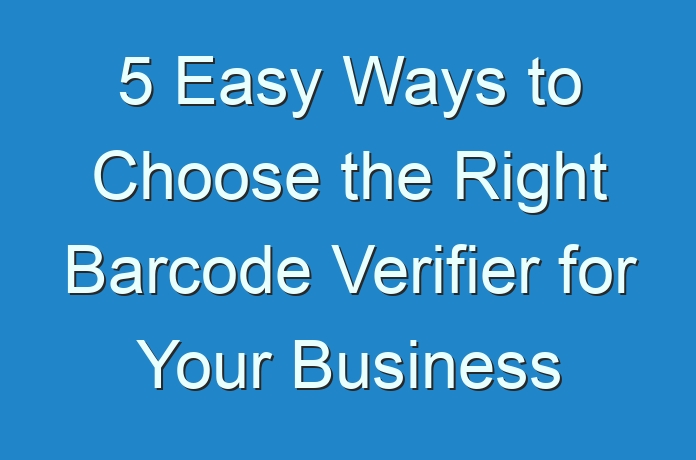
If you run a shop or a general store, you cannot imagine selling things to your customers without verifying their tags via barcodes. Therefore, you definitely need a barcode verifier before you sell articles to your customers. Before rushing to the market to purchase a barcode verifier, you must ask yourself a few questions and research the barcode verifiers. Besides, you need to get familiar with some terms and inspect them before you hop on to select a barcode for particular products to verify. Down below are mentioned some of the features you must look at-
- Software capabilities
- Minimum x-dimension
- Field of view
- Lighting angle
Obviously, the first question would be, why do you need it? It is the demand of your business, and the second question would be what type of barcode verifier do you need? Well, honestly, barcodes are costly, and choosing the wrong one can put you in trouble. You may require 1D liner or 2D data models, depending upon your need. The 1D only verifiers can cost you a bit less than the 2D ones. Besides, two individual verifiers can cost more than one multipurpose device. Therefore, to lower such confusion, I am here to help you find the right barcode verifier for your business.
1) Check the field of view-
Make sure to choose a barcode verifier that can read the largest barcode printed on your product without cutting it out. The barcode verifier you are opting for must have the camera lens large enough to read the barcodes and leave a specified space around to meet the quiet zone needs for the particular symbol type.
2) Know the minimum x-dimension-
Besides covering the large barcodes, your barcode verifier must be capable of reading the smallest cells on the coding slip as well. Therefore, you must know the largest and smallest bar in your barcode or cell to grab the barcode verifier whose camera lens can perfectly capture both dimensions.
3) Choose the correct lighting angle-
As there are different ISO specifications; therefore, they all have a different lighting angle requirement. That is why it is essential to pitch for the barcode that can read the cells in the right lighting angle on the slip of the items. Choosing the right lighting angle is crucial because your barcode must get enough illumination to get decoded by the verifier. Hence, there are different lighting angles for various degrees; for example, 30 degrees is used for DPM barcodes printed over curved surfaces and 90 degrees for highly reflective surfaces.
4) Style of the barcode verifier-
Barcodes are printed in different styles on different items, so your barcode verifier must be able to read a particular style. However, suppose you are using a barcode verifier to verify barcodes on multiple products and items. In that case, you need to get the one with adjustable camera height to read the smallest x dimension and largest bar accurately.
Get Alerts
Adjust your settings so you are immediately notified when your company monitoring software & websites, download non-work-related applications or engage in suspicious behavior. Receiving these alerts will ensure that you can take action quickly to stop a potential threat before it turns into a major problem.
5) Look for software capabilities-
Depending upon your demands, you need to see whether your barcode verifier comes with various software capabilities as mentioned below-
- Detecting faults in barcodes
- Easy to use interface
- Generating reports
Highlighting errors and so on.





